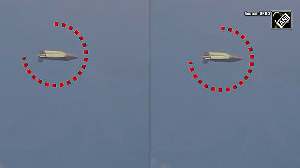The agreement was developed jointly by the two countries with the support of the Fogarty International Centre. Speaking at the signing, Zerhouni said, "Our scientific collaborations with colleagues in India are strong. Through this agreement, they will become stronger. With the rising global burden of disability and suffering posed by eye disorders, partnerships such as the one we forged today are increasingly critical."
"We are very concerned about the toll of many vision disorders on our well-being. Through this collaboration, we are confident that India will gain important new knowledge for the protection of sight and for the prevention of vision loss," Bhan was quoted as saying in an NIH release.
The Letter of Intent recognised the strong "commitment" by the two countries to reduce the burden of vision disability and blindness along with successful research collaboration between Indian and American scientists and institutions in the prevention of blindness.
The Letter of Intent also acknowledged the scientific accomplishments realised under previous Indo-US collaborative agreements, including the Indo-US Science and Technology sub-commission and the Gandhi-Reagan Science and Technology Initiative and the high degree of research expertise in basic biology and clinical science in both countries, which could make collaboration on an equal footing possible.
Under the Statement of Intent, the two countries "mutually anticipate an expanded collaborative programme of vision research". Steps for implementing this initiative would be developed through consultations.
On the Indian side, the Department of Biotechnology would serve as the nodal agency, with the expectation of the involvement of other interested governmental and non-governmental organisations, it said.
Similarly, on the US side, the Health and Human Services/NIH National Eye Institute is intended to serve as the nodal agency. Both parties may also identify scientific co-chairs in each other for implementation of research collaborations.
"With this Statement of Intent we recognise that Indo-US scientific cooperation can contribute significantly to the prevention of visual disability and blidness in India, the United States and the globe. In signing this Statement of Intent, we encourge scientists and health providers in both our countries to work towards this goal," the two sides said.
Eye disorders are responsible for 3.1 percent of the global burden of diseases, according to the World Health Organisation. Worldwide, more than 37 million people are blind. In India, the number is more than 12 million and in the US, over one million.






 © 2025
© 2025